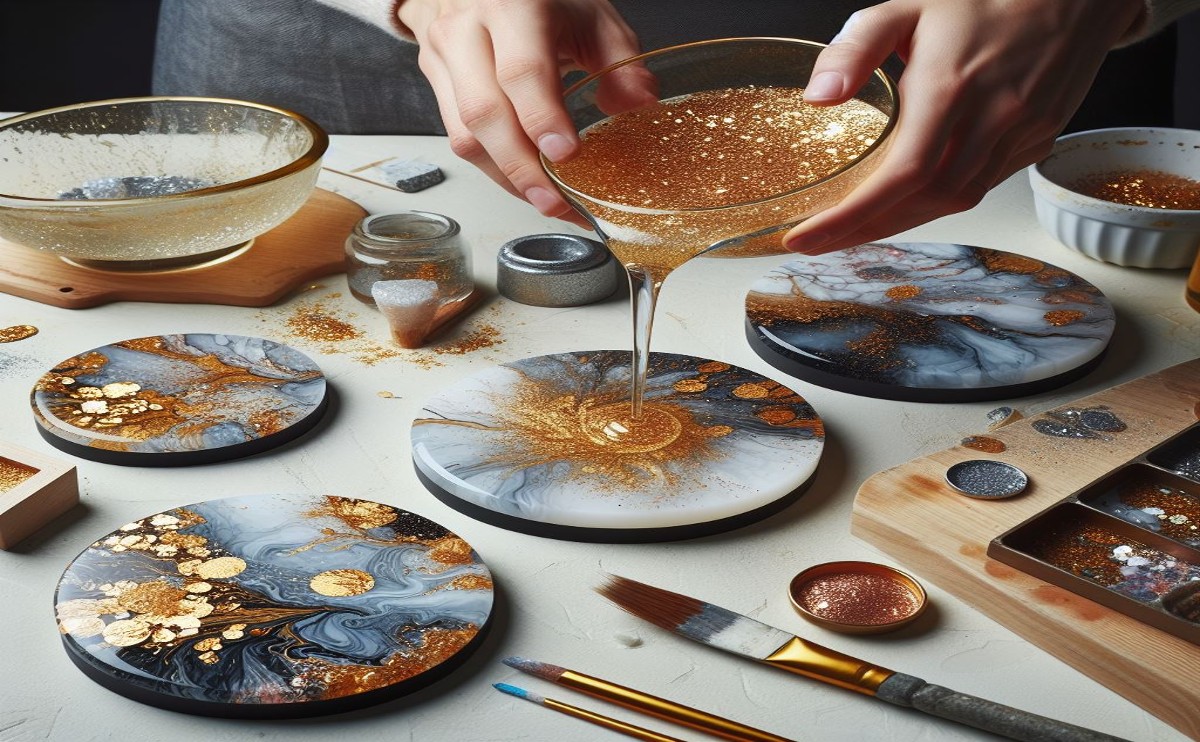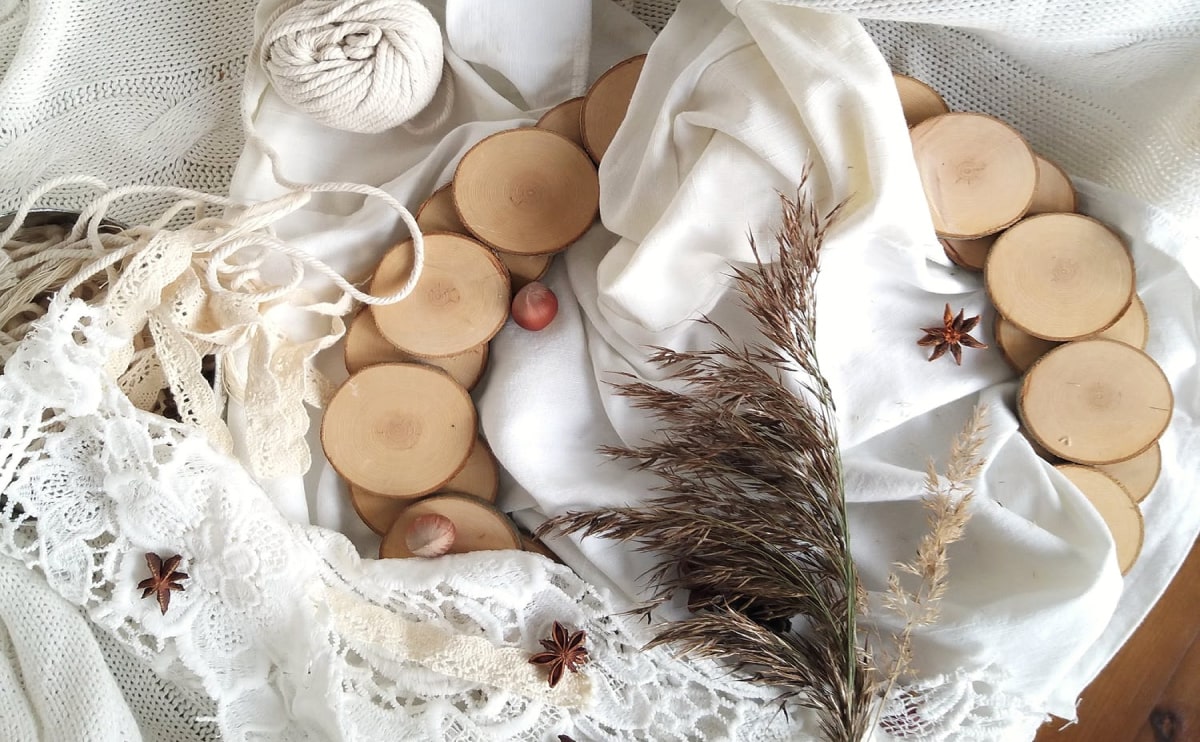General Questions about Resin Art Products: Understanding the Craft
Introduction:
"Demystifying the World of Resin Art"
Resin art, a captivating and versatile medium, has garnered immense popularity. This guide addresses common questions about resin art, offering insights into its creation, materials, and the endless possibilities it presents.
General Questions about Resin Art Products
- What is resin art?
Resin art is a form of artwork where artists use epoxy resin, a type of synthetic polymer, to create glossy, hard, and visually appealing pieces. - How is resin art made?
Resin art is made by mixing epoxy resin with a hardener, then pouring it onto a surface or into molds, often adding colors or objects before it cures and hardens. - What materials are used in resin art?
Key materials include epoxy resin, hardener, colorants (like pigments or dyes), and various embellishments like glitter, flowers, or beads. - How durable are resin art products?
Resin art products are highly durable, resistant to moisture and wear, making them long-lasting with proper care. - Can resin art be customized?
Absolutely, resin art is highly customizable in terms of shape, color, and inclusions, making each piece unique. - What are the most popular resin art products?
Popular items include resin jewelry, coasters, trays, wall art, and functional decor pieces. - How do I care for my resin art product?
Keep it out of direct sunlight, clean with a soft cloth, and avoid harsh chemicals to maintain its shine and prevent yellowing. - Are resin art products safe for children?
While finished products are generally safe, the creation process involves chemicals that should be handled by adults or under strict supervision. - Can resin art be used outdoors?
Yes, but it's important to use UV-resistant resin to prevent yellowing and degradation from sunlight. - How long does resin art last?
With proper care, resin art can last for decades, retaining its clarity and luster.
Understanding Resin Art Basics
- What is the difference between epoxy resin and polyester resin?
Epoxy resin is more durable, less toxic, and cures clearer than polyester resin, making it preferred for art. - How does resin art differ from other art forms?
Resin art stands out for its depth, glossiness, and three-dimensional feel, unlike flat, matte finishes in traditional painting. - What is the history and origin of resin art?
Resin art has roots in industrial applications, evolving into an artistic medium in the late 20th century. - Can resin art be considered fine art?
Yes, resin art is increasingly recognized in the fine art world for its versatility and unique aesthetic. - What are the environmental impacts of resin art?
The production and disposal of synthetic resins can be environmentally taxing, prompting a shift towards eco-friendly alternatives.
Getting Started with Resin Art
- What is the best resin art kit for beginners?
Look for kits with clear instructions, safety gear, and a variety of basic materials for experimentation. - How much does it typically cost to start resin art?
Initial costs vary, but a basic setup including resin, hardener, and basic colorants can start from $50-$100. - What are the basic steps in creating a resin art piece?
Basic steps include preparing your workspace, mixing resin and hardener, adding colors or inclusions, pouring the resin, and allowing it to cure. - Are there any common mistakes beginners should avoid in resin art?
Common mistakes include incorrect resin-to-hardener ratios, inadequate mixing, and working in an improperly ventilated area. - How can I set up a safe workspace for resin art at home?
Ensure good ventilation, use protective gear like gloves and masks, and cover surfaces to protect from spills.
Advanced Techniques and Design Ideas
- How do I incorporate objects or colors into resin art?
Objects or colors can be added after the resin is mixed but before it cures, allowing for creative layering and design. - What are some advanced techniques for texture in resin art?
Techniques include using heat guns for wave effects, embedding different materials, and layering for a 3D effect. - Can I create large-scale resin art pieces?
Yes, but it requires careful planning, larger quantities of resin, and sometimes a more gradual, layered approach to curing. - How do I achieve a high-gloss finish on my resin art?
Use high-quality resin, ensure a dust-free environment while curing, and consider a top coat for extra gloss. - What are some creative uses of resin in art beyond traditional forms?
Creative uses include encapsulating objects, creating resin geodes, and combining resin with other mediums like wood or metal.
Resin Art for Home Decor
- How can resin art enhance home decor?
Resin art adds a modern, sleek touch to home decor, with its glossy finish and versatility in color and form. - What are some popular resin art designs for home use?
Popular designs include ocean-inspired pieces, floral embedments, and abstract color patterns. - Can resin art be used in functional home items like furniture?
Yes, resin is often used in tables, countertops, and decorative yet functional items like trays and bowls. - How do I match resin art with my home's aesthetic?
Consider the color scheme and style of your space; resin art can be customized to complement modern, rustic, or eclectic decor. - What are the care and maintenance tips for resin art in home decor?
Avoid direct sunlight, use a soft cloth for cleaning, and avoid extreme temperatures to maintain the integrity of the resin.
Resin Art as a Hobby or Business
- How can I turn my resin art hobby into a business?
Start by creating a portfolio, setting up an online store, and networking on social media platforms to reach potential customers. - What are the key trends in the resin art market?
Current trends include eco-friendly resins, incorporation of natural elements, and personalized, custom designs. - How do I price my resin art products?
Consider material costs, time, skill level, and market demand. Pricing should cover costs and reflect the artistic value. - What are the best platforms to sell resin art online?
Popular platforms include Etsy, Instagram, and personal websites with e-commerce capabilities. - How can I market my resin art effectively?
Utilize social media, collaborate with influencers, participate in art fairs, and consider SEO strategies for online visibility.
Workshops and Learning Resources
- What should I look for in a resin art workshop?
Look for experienced instructors, comprehensive material coverage, and hands-on opportunities to practice techniques. - How can online tutorials help in learning resin art?
Online tutorials offer step-by-step guidance, tips, and can be a great resource for learning at your own pace. - Are there any books or magazines dedicated to resin art?
Yes, there are several publications and books that focus on resin art techniques and inspiration. - How can I connect with other resin artists for learning and inspiration?
Join online forums, social media groups, and attend art fairs or workshops to connect with the resin art community. - What are some challenges in teaching resin art?
Challenges include ensuring safety, managing the varying pace of learners, and conveying complex techniques simply.
Health and Safety in Resin Art
- What are the health risks associated with resin, and how can I mitigate them?
Risks include skin irritation and fumes. Mitigate by working in a well-ventilated area, wearing protective gear, and following product guidelines. - Are there any non-toxic alternatives to traditional resin?
Yes, there are eco-friendly resins available that are formulated to be less toxic and more environmentally friendly. - How important is ventilation when working with resin?
Proper ventilation is crucial to avoid inhaling toxic fumes and to ensure a safe working environment. - What safety gear should I use while working with resin?
Use gloves, respirator masks, and protective eyewear, especially when sanding or heating resin. - How do I safely dispose of resin waste?
Follow local regulations for hazardous waste disposal, and avoid pouring uncured resin into drains or natural environments.
Resin Art for Different Audiences
- Is resin art suitable for children's projects?
While the final products are safe, the creation process with chemicals is not recommended for young children. - How can I make resin art accessible for beginners?
Offer beginner-friendly workshops, create simple project kits, and provide clear instructions and support. - Are there any resin art projects specifically for seniors?
Yes, projects like small jewelry pieces or coasters can be suitable and enjoyable for seniors. - How can resin art be used in educational settings?
Resin art can be incorporated into art education to teach about chemistry, color theory, and creativity. - What are some simple resin art projects for first-time artists?
Start with small projects like pendants, keychains, or simple coasters to learn the basics.
Advanced Resin Art Techniques
- How can I create a marbled effect in resin art?
Use multiple colored resins and gently swirl them together before the resin starts to cure. - What techniques are used for creating depth in resin art?
Layering multiple pours of resin, each with different elements or colors, creates depth and a 3D effect. - Can I mix other media with resin in my art projects?
Absolutely, mixing media like acrylic paints, alcohol inks, or embedding objects can enhance the creativity of resin art. - What are some tips for achieving a flawless surface in resin art?
Work in a dust-free environment, use a torch or heat gun to remove bubbles, and ensure your working surface is level. - How do I prevent resin art from yellowing over time?
Use UV-resistant resin, avoid prolonged exposure to sunlight, and apply a UV-protective varnish if needed.
Creative and Artistic Aspects of Resin Art
- How can I express my artistic style through resin art?
Experiment with colors, patterns, and inclusions that reflect your personal style and artistic vision. - What are some unique themes to explore in resin art?
Consider themes like nature, abstract patterns, celestial bodies, or cultural motifs. - How can resin art be used in mixed media projects?
Resin can be combined with wood, metal, fabric, or found objects to create multidimensional mixed media art. - Can I use resin art in wearable art pieces?
Yes, resin is popular in creating unique jewelry pieces like pendants, earrings, and bracelets. - What are some ways to add texture to resin art?
Techniques include adding textured materials, using molds with patterns, or manipulating resin with tools while it's curing.
Technical Aspects and Troubleshooting
- What causes bubbles in resin and how can I avoid them?
Bubbles can be caused by vigorous mixing or moisture. Avoid them by mixing slowly and using a heat gun after pouring. - How do I fix imperfections in cured resin art?
Sand the area gently and apply a fresh layer of resin for minor imperfections. For larger issues, you may need to pour a new layer. - What is the ideal curing time and temperature for resin art?
Curing time varies by product but typically ranges from 24 to 72 hours. Ideal temperatures are between 75-85°F (24-29°C). - Can I speed up the resin curing process?
While some resins can be cured faster with heat, it's generally recommended to follow the manufacturer's curing time for best results. - How do I ensure even coloring in my resin art?
Mix colorants thoroughly with resin before pouring and use high-quality pigments for consistent color.
Resin Art in Professional and Commercial Contexts
- How can I showcase my resin art in galleries or exhibitions?
Create a compelling artist statement, ensure high-quality finishing of your pieces, and consider unique themes or styles that set your work apart. - What are the best practices for shipping resin art?
Use sturdy, protective packaging, consider insurance for high-value pieces, and provide clear handling instructions to ensure safe delivery. - How can I effectively price my resin art for galleries or commercial sale?
Factor in material costs, time, artistic value, and market research. Pricing should reflect the quality and uniqueness of your work. - What are some strategies for building a brand around my resin art?
Develop a consistent style, create a strong online presence, engage with your audience, and offer a range of products. - How do I handle commissions and custom requests for resin art?
Communicate clearly with clients about expectations, timelines, and pricing. Create sketches or prototypes for approval before starting the final piece. - What are the legal considerations for selling resin art?
Understand copyright and intellectual property laws, have clear terms of sale, and consider business licensing and tax implications.
Environmental and Ethical Considerations
- Are there sustainable practices in resin art production?
Use eco-friendly resins, minimize waste, and consider the lifecycle and disposability of your art products. - How can I source ethically-produced resin and materials?
Research suppliers committed to environmental responsibility, and consider using recycled or biodegradable materials. - What are the challenges of making resin art eco-friendly?
Finding non-toxic, biodegradable resins that perform as well as traditional resins can be challenging. - Can resin art be recycled or repurposed?
While difficult to recycle traditionally, resin art can be repurposed or upcycled into new art pieces. - How do I educate customers about the environmental impact of resin art?
Provide information about the materials used, offer tips for long-term care, and promote sustainable art practices.
Community and Collaboration
- How can I collaborate with other artists or brands in resin art?
Reach out for joint projects, participate in collaborative exhibitions, or create cross-promotional art pieces. - What are some ways to engage with the resin art community?
Join online forums, attend workshops and art fairs, and participate in community projects or challenges. - How can resin artists contribute to local art scenes?
Offer workshops, collaborate with local businesses for art installations, and participate in community art events. - What are the benefits of joining resin art associations or groups?
Networking opportunities, access to resources and information, and a sense of community and support. - Can resin art be used for social or charitable causes?
Yes, artists can create pieces for auctions, fundraisers, or awareness campaigns, using art to support meaningful causes.
Trends and Future of Resin Art
- What are the emerging trends in resin art?
Trends include the use of natural elements, exploration of 3D printing with resin, and interactive, sensory art pieces. - How is technology influencing resin art?
Digital tools for design, social media for marketing, and online platforms for sales are significantly impacting the resin art world. - What is the potential future of resin art in the art world?
Resin art is gaining recognition for its versatility and potential for innovation, suggesting a growing presence in contemporary art. - How can resin artists stay updated on industry changes and trends?
Follow art blogs, subscribe to industry magazines, and engage with online communities. - What role does resin art play in modern interior design?
Resin art offers unique, customizable options for modern interiors, blending functionality with artistic expression.
Personal Development and Artistic Growth
- How can I continuously improve my skills in resin art?
Practice regularly, experiment with new techniques, and seek feedback from peers or mentors. - What are some goals resin artists can set for their development?
Goals can include mastering advanced techniques, developing a signature style, or exhibiting in prestigious galleries. - How can resin art be a tool for personal expression?
Resin art allows for personal storytelling, emotional expression, and exploring individual creativity. - What are the therapeutic benefits of engaging in resin art?
It offers stress relief, a sense of accomplishment, and can be a meditative and therapeutic practice. - How can I find my unique voice or style in resin art?
Explore different mediums and techniques, draw inspiration from personal experiences, and don't be afraid to break traditional rules.
Education and Teaching Resin Art
- What are effective ways to teach resin art to beginners?
Start with basic techniques, provide comprehensive step-by-step instructions, and create a supportive learning environment. - How can I develop a curriculum for resin art classes?
Structure classes around skill progression, include both theory and practical exercises, and tailor content to your audience's needs. - What are the key elements of a successful resin art workshop?
Clear objectives, hands-on practice, quality materials, and an engaging and knowledgeable instructor. - How can online platforms be used for teaching resin art?
Utilize video tutorials, live webinars, and interactive online classes to reach a wider audience. - What are some challenges in online resin art education?
Ensuring students have access to materials, providing personalized feedback, and creating an interactive learning experience remotely. - How can I assess the progress of students in resin art?
Through project submissions, constructive feedback sessions, and observing improvements in technique and creativity. - What are the opportunities for professional development in teaching resin art?
Attend educator workshops, obtain certifications, and stay updated with industry trends to enhance teaching skills and knowledge.
Conclusion:
Resin art offers a world of creative possibilities, blending artistic expression with technical skill. Whether you're a beginner or an experienced artist, understanding the nuances of resin art can lead to stunning creations that stand the test of time.






